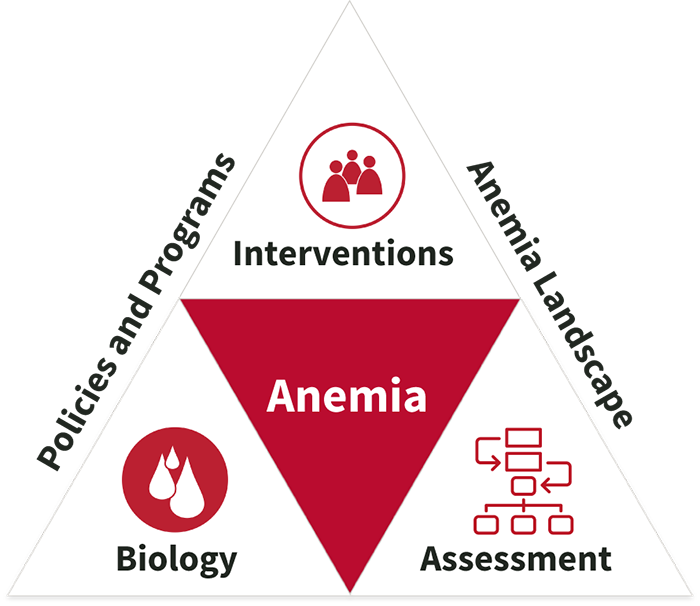Anemia is a public health concern disproportionately affecting young children, pregnant women, and women of reproductive age. The Global Burden of Disease Study estimates that iron deficiency anemia and thalassemia are the leading anemia causes worldwide.
While anemia is prevalent around the world, the underlying causes differ among different populations and regions. A “one size fits all” approach does not exist, and implementation of strategies to reduce anemia depend on the main causes of anemia, and the financial and technical capacity of each country.
We found 93 resource(s)
Journey Towards Better Nutrition in Kenya with High Iron Beans
Blog published by GAIN in
This is a description of a programme to develop commercial markets through private and public partnerships for biofortified beans to address hidden hunger among consumers in Kenya.
Malaria is a Cause of Iron Deficiency in African Children
Journal Article published by Nature Medicine in
This study is a Mendelian randomization analysis to evaluate the contribution of malaria to iron deficiency in Africa.
Iron Homeostasis During Anemia of Inflammation: A Prospective Study of Patients with Tuberculosis
Journal Article published by Blood in
This study evaluates the role of antituberculosis treatment to improve hemoglobin levels in adults in Tanzania with tuberculosis.
Anemia Among Women of Reproductive Age: An Overview of Global Burden, Trends, Determinants, and Drivers of Progress in Low- and Middle-Income Countries
Journal Article published by Nutrients in
This review compiles evidence on the determinants and drivers of anemia reduction, including government policies and programs, in women of reproductive age in low- and middle-income countries.
Non-Invasive Hemoglobin Measurement Devices Require Refinement to Match Diagnostic Performance with Their High Level of Usability and Acceptability
Journal Article published by PLOS One in
This study evaluated the performance of multiple point-of-care hemoglobin devices, including a novel noninvasive smartphone application tested on Apple® and Android® cell phones, Masimo Pronto®, and HemoCue® Hb-301 and Hb-801, against a gold-standard hematology analyzer (reference hemoglobin) using venous blood among refugees in a city in North…
Benefits and Risks of Iron Interventions in Infants in Rural Bangladesh
Journal Article published by NEJM in
This paper presents the results of a three-group, double-blind, double-dummy, individually randomized, and placebo-controlled trial to assess the immediate and medium-term benefits on cognitive development and risks of three months of daily supplementation with iron syrup or iron-containing multiple micronutrient powders, as compared with placebo…
Home Fortification of Complementary Foods Reduces Anemia and Diarrhea Among Children Aged 6–18 Months in Bihar, India: A Large-Scale Effectiveness Trial
Journal Article published by Journal of Nutrition in
This paper reports the results of a 12 month cluster-randomized, effectiveness trial with multiple micronutrient powders among children aged 6–18 months and its impact on multiple micronutrient powders consumption and hemoglobin concentration in India.
Haemoglobin Thresholds to Define Anaemia in a National Sample of Healthy Children and Adolescents Aged 1–19 Years in India: A Population-Based Study
Journal Article published by The Lancet Global Health in
This study assesses the age-specific and sex-specific percentiles of hemoglobin and cutoffs to define anaemia in children and adolescents aged 0–19 years in India, using data from the Comprehensive National Nutrition Survey.



